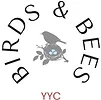It’s easy to train black-capped chickadees and Nuthatches to feed from your hand. They tend to be very people oriented birds and are always open to a free meal. But should this behaviour be encouraged? A quick online search of hand feeding wild birds doesn’t offer much in the way of pros and cons. In fact, what you will find is a great deal of information on how to attract them to your hand. We have strong opinions on this matter; we strongly oppose this practice.
Hand Feeding Seems Harmless
What could be the harm, one might ask? It seems harmless, and it is appealing to have a small wild creature interact with you on such an intimate level. There are several reasons why you should avoid the temptation. One of the reasons to discourage hand feeding is the potential for aggression in birds. As the birds become more comfortable with the practice they come to expect food. When they don’t get satisfaction, they become bolder which can escalate. We all know this to be true in wildlife like bears and wolves, but it happens in all species, including birds. You might have experienced aggressive seagulls at the beach. Chickadees, as sweet and good natured as they are, can also become aggressive when they expect humans to hand feed them and the food is not forthcoming. This aggression translates to “dive bombing” which is a behaviour usually reserved for the nesting season when bird species feel their nests or nestlings are being threatened.
Serious Consequences
Another reason to stop the practice is because it may alter the natural behavior of the bird to the point that it causes serious consequences. An example of this can be seen in a study of Florida Scrub-Jays. Declining population means this species is considered threatened. Florida Scrub-Jays are a particularly friendly bird and can easily be encourage to take peanuts from the hand. A study found that birds fed by people lay and hatched their eggs earlier than birds that foraged. The unfortunate result is the young are born before their principal food source, caterpillars, appears in late spring. This can lead to malnutrition and even starvation. This is not to suggest that feeding is the sole cause of population decline, but it is a contributing factor. Closer to home we have seen feeding bring wild birds closer to development. this brings them in contact with traffic with unfortunate results.
Love Them/Leave Them
In Canada it is illegal to interact with wildlife (and yes this includes birds) in National parks—Fish Creek Park is a Canadian National inter-city park. And other parks in the Calgary area discourage hand feeding (or for that matter any feeding) of wildlife. These parks include Weaselhead, Inglewood Bird Sanctuary and Nose Hill to name a few.
If you love wild birds, please admire them without hand feeding them. It doesn’t do them any favours. If you are not close enough to get a very good look, get a pair of binoculars and remember: the practice of hand-feeding wild birds is now officially discouraged in parks and other public areas
If you enjoyed this post, we encourage you to signup for our newsletter:
Sign up for our monthly newsletter that keeps you up to date on our in store specials, monthly savings and has great articles about local birds, It also lets you know what upcoming seminars and workshops are happening in our Classroom/Gallery.
By submitting this form, you are consenting to receive marketing emails from: . You can revoke your consent to receive emails at any time by using the SafeUnsubscribe® link, found at the bottom of every email. Emails are serviced by Constant Contact

